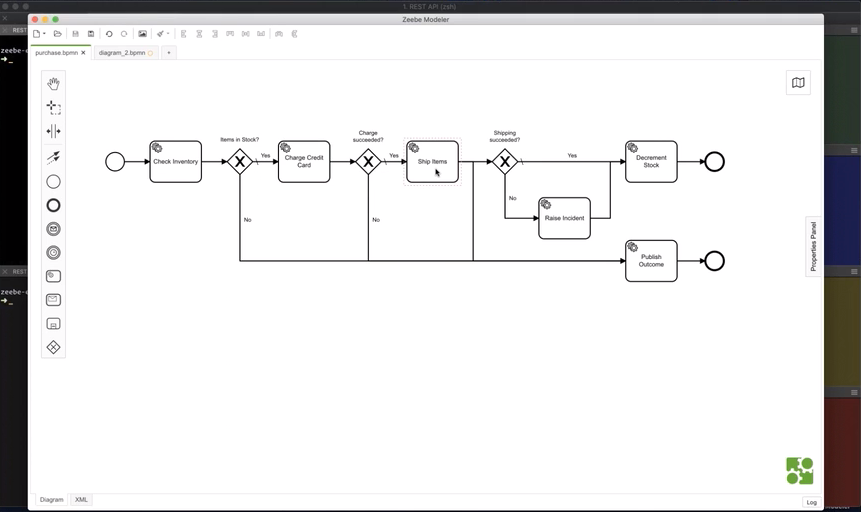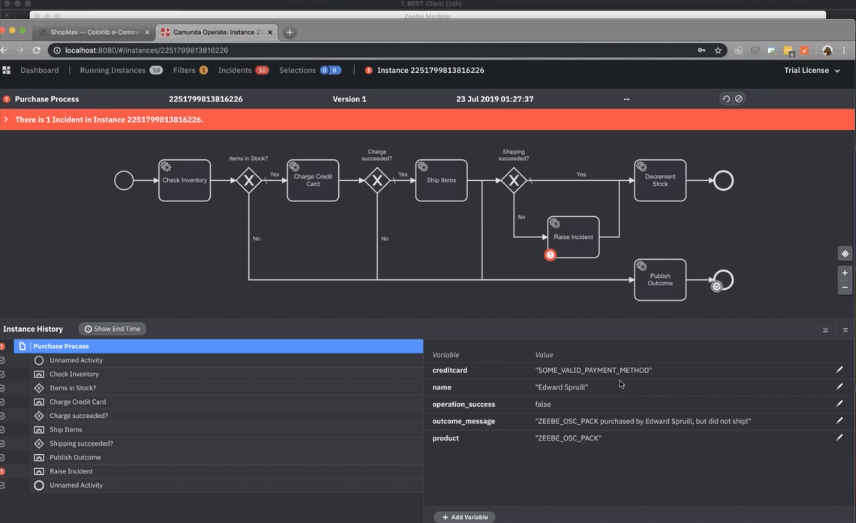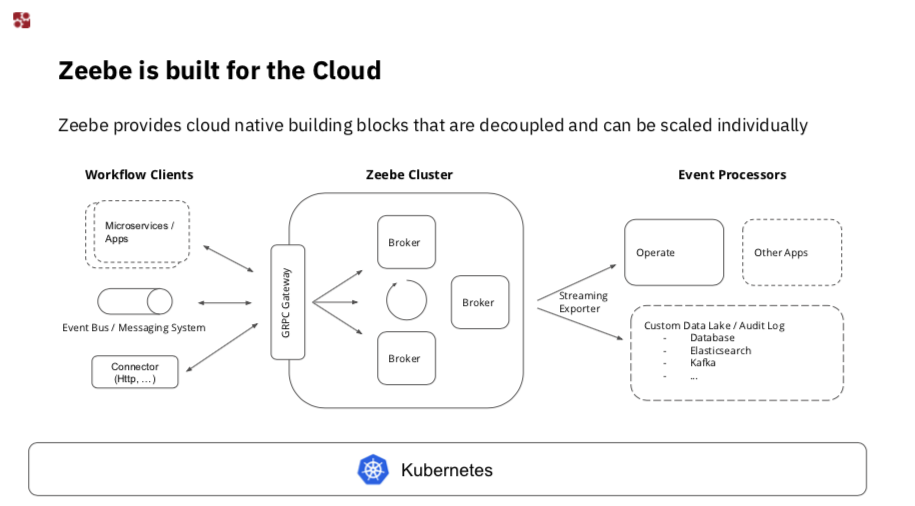On Monday, July 22, Camunda CTO Daniel Meyer and Zeebe Developer Advocate Josh Wulf joined me to host a webinar to discuss the Zeebe 0.20.0 release–which, in case you haven’t heard, is our first production-ready release of Zeebe. Did we mention we’re excited?
The webinar recording is available online: https://camunda.com/learn/webinars/zeebe-mid-year-update-july-2019/
As are the slides (which you can download as a PDF): https://www.slideshare.net/ZeebeHQ/zeebe-0200-release-webinar-july-22-2019
And so is Josh’s GitHub repo with the e-commerce demo he shared in the webinar: https://github.com/jwulf/zeebe-ecommerce-demo
Here’s a quick review of what we covered.
Zeebe 0.20.0 Release Details
In this section, we discussed:
- How we defined “production ready” for the Zeebe 0.20.0 release
- Why we decided on 0.20.0 instead of 1.0
- The new Zeebe Community License and what it means to users
This section was mostly review from last week’s release announcement itself.
What is Zeebe? (And An Awesome New Demo)
Josh spent a couple of minutes describing what Zeebe is and what it’s capable of, then he shared a newly-created demo.
If you’re just getting started with Zeebe or microservices orchestration, we recommend watching this section–the demo offers a detailed, step-by-step walkthrough of how to apply Zeebe to an example use case.
The demo touched on modeling:

Creating workflow instances and completing jobs via the Node.js client:

And even resolving incidents in Operate:

Zeebe Under The Hood
Daniel spent about 15 minutes discussing Zeebe internals, including:
- How Zeebe was built with cloud-native architectures in mind
- Key Zeebe components (broker, gateway, clients, exporters) and how they work together
- Different options for connecting Zeebe to microservices (embedding clients, connectors for REST or serverless, Kafka and message queues, etc.)
- How Zeebe stores workflow state and provides fault tolerance without a relational database
If you’ve ever wondered how exactly Zeebe does what it does, and you want to hear it directly from the person who wrote the first lines of Zeebe code, then these are the slides for you.

Community Contributions
Josh highlighted a couple of recent community contributions to Zeebe:
- A worker that’s compatible with both Camunda BPM and Zeebe, contributed by Olivier Albertini from the City of Montreal
- A Rust client for Zeebe, contributed by Mackenzie Clark
A big thanks to Olivier and Mackenize!
If you’re interested in contributing to Zeebe, or if you have questions for us, please feel free to get in touch.
What’s Next for Zeebe?
Daniel wrapped things up with a look at:
- Zeebe’s Q3 roadmap
- Zeebe enterprise support (available starting now)
- Zeebe as a managed cloud service (coming soon)
Thanks to all of you who attended the webinar, and we’ll be back with another one soon!
